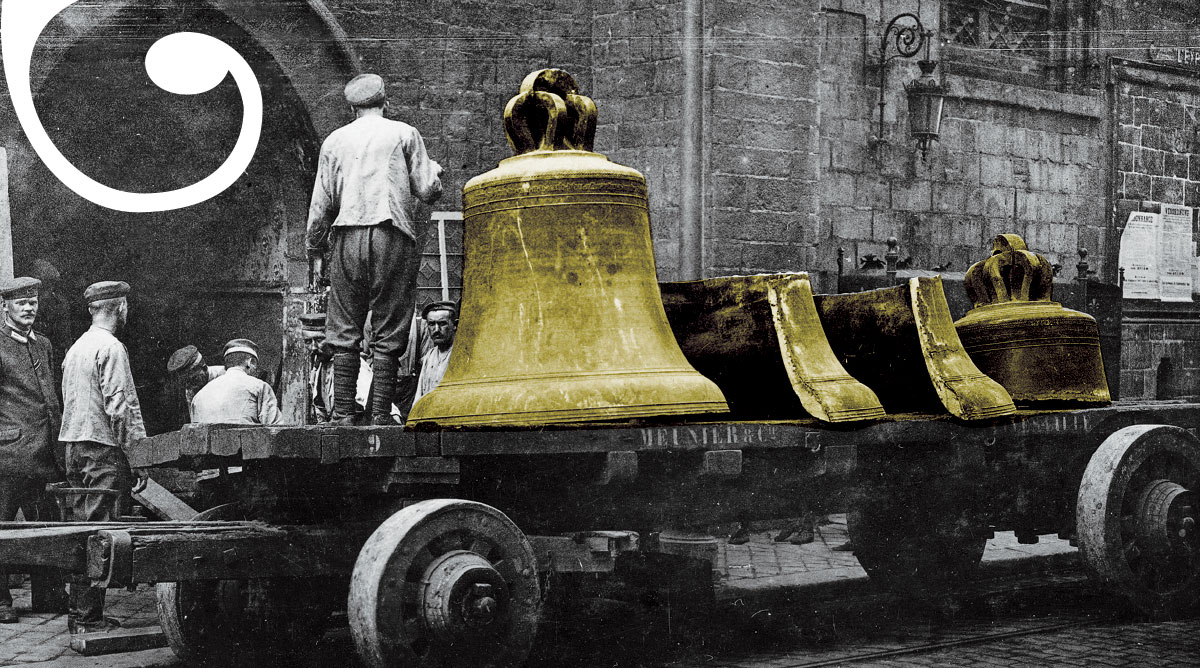
To look at them, you might wonder why the Germans even bothered: 127 partial and haphazard plaster castings of classical bells stolen from the churches of Europe, made shortly before the instruments were melted down and turned into arms and ammunition.
Undocumented, they were gathered up by Percival Price and brought back to his native Canada, where they now sit in the archives of the Canadian Museum of History, their images depicting cultural symbols and figures of Christ, angels, demons and dragons.
Price, a musician, composer and world authority on campanology—the study of bells—designed the carillon in the Peace Tower on Parliament Hill and served as the first Dominion Carillonneur for 12 years.
He was on staff at the University of Michigan, Ann Arbor, from 1939 until 1972, teaching composition and campanology and serving as the university’s carillonneur.
By the end of the Second World War, Price was away serving in the Canadian army’s Enemy Science and Technology Investigation Section. He was sent to take stock of more than 175,000 bells removed from churches and cathedrals in occupied Europe and Axis countries.
Only about 25,000 bells survived the war, lying neglected in scattered Glockenfriedhöfe (bell cemeteries), the biggest of them in Hamburg.
Price spent two years working as a consultant to the Vatican Commission for the Restoration of Bells and the Inter-Allied Commission on the Wartime Preservation of Artistic and Historic Monuments in War Areas—better known as the Monuments Men. He helped Austrian, Belgian, Dutch, West German and Italian government commissions locate and repatriate bells.
In the process, he launched a study of the tonal qualities of surviving bells that immeasurably advanced the art and science of casting bells, known as bell founding.
“The concentration, on the ground, of the four depositories at Hamburg of about 12,000 bells [spanning 700 years of bell founding] offered an opportunity likely never again to be met with,” Price wrote in a 150-page report filed in 1947.
“A lot of these bells dated back hundreds of years,” said Andrea McCrady, the cur-rent Dominion Carillonneur. The process of replacing lost bells “allowed them to really analyze what bell is well-tuned and what sounds like a broken flowerpot.”
The bulk of the fieldwork, recording bells and assessing their various technical quali-ties, was conducted by Erich Thienhaus, a German acoustics physicist.
“After the Second World War, the Dutch and Belgian companies—the bell founders—learned so much that, since they were casting new carillons, they produced very well-tuned bells,” said McCrady. “So, a modern carillon has a different voice entirely.”

The Second World War was not the first time an invading army confiscated church bells for war purposes but, as Price so optimistically implied, it may well have been the last.
When the First World War ended, bells rang out across Allied nations, breaking what for many had been a four-year silence enforced by regulation in some places and imposed by confiscation in others. Tens of thousands of bronze bells—some imparting “the songs of the angels” since the 12th century—had been seized in Germany and across Europe and melted down for arms and munitions.
During “the war that will end war,” as English writer H.G. Wells put it, 44 per cent of the bells in Germany alone were lost, many given willingly to support the war effort—and some not so willingly.
In the parish of Kusel in southwestern Germany, Deacon Karl Munzinger had grudgingly resigned himself to the inevitable after resisting a decree ordering the surrender of bells to be melted down and converted to guns and shells.
“They will speak a different language in the future,” Munzinger said in his sermon of July 22, 1917. “It goes against any feelings that they, who like no other, preach peace and should heal wounded hearts, should tear apart bodies in gruesome murders and open wounds that will never heal.”
The Kaiser’s army didn’t stop at home. By the time the war was over, there was only one pre-revolution carillon left in France.
Bell metal is typically made of an alloy usually composed of four parts copper to one part tin, and is known for its hardness and rigidity. The Germans broke up the bells, then smelted and refined the metal, separating the copper, tin and other metals, including lead, zinc, even traces of silver and gold. A tonne of bell metal would typically yield 760 kilograms of copper and 180 of the more sought-after tin.
The Second World War brought more comprehensive and devastating destruction. By 1941, Nazi authorities had categorized bells in Germany into four types delineated by age and significance:
• Gruppe A were modern bells, cast since 1918 and designated for immediate processing. They comprised 70 per cent of all bells in Germany.
• Gruppe B were deemed more valuable than A and were to be processed as needed.
• Gruppe C were deemed more valuable than B and were to be processed as needed. B and C comprised 20 per cent of bells.
• Gruppe D were deemed most valuable and included bells of the Middle Ages and carillons not considered modern. They formed the balance of the rest and were not to be melted down.
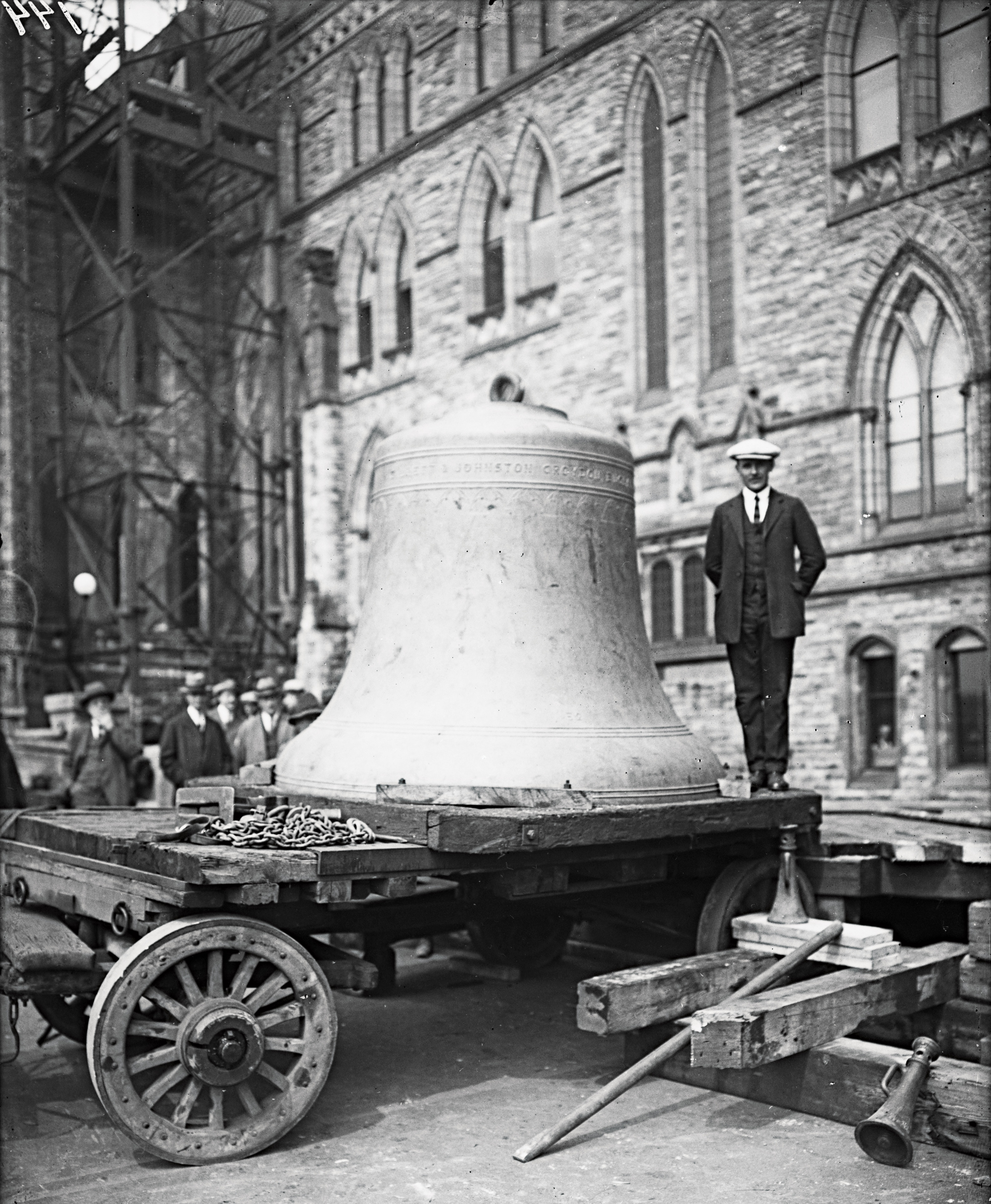
Similar classifications were made for bells of the occupied countries, although the guidelines were only loosely followed. Some regions, such as Alsace-Lorraine which was annexed by Nazi Germany after the defeat of France, or whole countries, including Czechoslovakia and the Netherlands, lost virtually all their bells.
Others, such as Norway, Denmark and Luxembourg, were left untouched. So was Vichy France, where the collaborationist government of Marshal Philippe Pétain struck a deal with the devil, so to speak, by claiming desecration of French cultural heritage and offering up the country’s bronze statues instead. In reality, Pétain wanted to ingratiate his traitorous regime with the Roman Catholic Church.
However, the deal, known as The Vichy Exception, failed to save every bell. As in the rest of Europe, many were destroyed in attacks and bombing raids.
Benito Mussolini’s fascist government actually forged a prewar agreement between Italy and the Vatican providing for the “mobilization” of bells, half of which were to be claimed for war industries. As in Germany, at least one bell designated by local authorities was to remain in every tower.
The bells were broken up in Italy and the scrap was sent to Hamburg for processing because Italian smelting plants did not have the capacity to handle the deluge.
Churches presented a clear target for aerial bombardment, but bell towers didn’t. Price noted that as the churches themselves burned, the still-standing bell towers acted as chimneys, even ovens. They would get so hot that bells “melted and fell in drops, coagulating on the floor below. Sometimes the congealed mass partially oxidized, leaving a red and grey ash. In particularly hot currents of air, they disappeared without a trace.”
Price reported that Rouen Cathedral lost its five swinging bells, as well as “Jeanne d’Arc” which, at 20 tonnes, was the largest bell in France. He said it was reduced to a pile of light ash, some of which he collected and brought home with him.
Some villages and churches went to heroic lengths to save their bells from seizure. In the Belgian town of Ath, southwest of Brussels, there had been no carillon since fire destroyed the church in 1815.
By definition, a carillon has at least 23 bells, usually fixed rather than swinging. The Germans had ordered that carillons be spared in the initial round of confiscations. So local residents collected bells from all around Ath and put them into a single bell chamber, giving it the appearance of a carillon.
They found an old guidebook stating that Ath had a carillon and gave it to German authorities to prove its existence. Then, to meet the German demand that a carillon must be heard in order to be spared, they found a phonograph recording of a real carillon and installed a speaker in the tower to play it.
“It is stated that the Germans neither enforced the demand to hear it, nor discovered the electrical substitution for this purpose,” reported Price.
The Germans threatened to remove the carillon in Seclin, in northern France, before “a group of Frenchmen posing as Germans arrived at the church with a lorry and loaded it with all the bells except those too large to get out of the tower.
“They drove away and buried them under a shed in a secret place in the country, where they remained throughout the war,” wrote Price. By the time Price finished his investigations, they had been returned but not reinstalled.
In Maribor, then in Yugoslavia and now the second-largest city in Slovenia, partisans prevented the removal of bells by local authorities working on behalf of the Germans. Wehrmacht troops were subsequently dispatched to conduct the seizure. The partisans killed them.
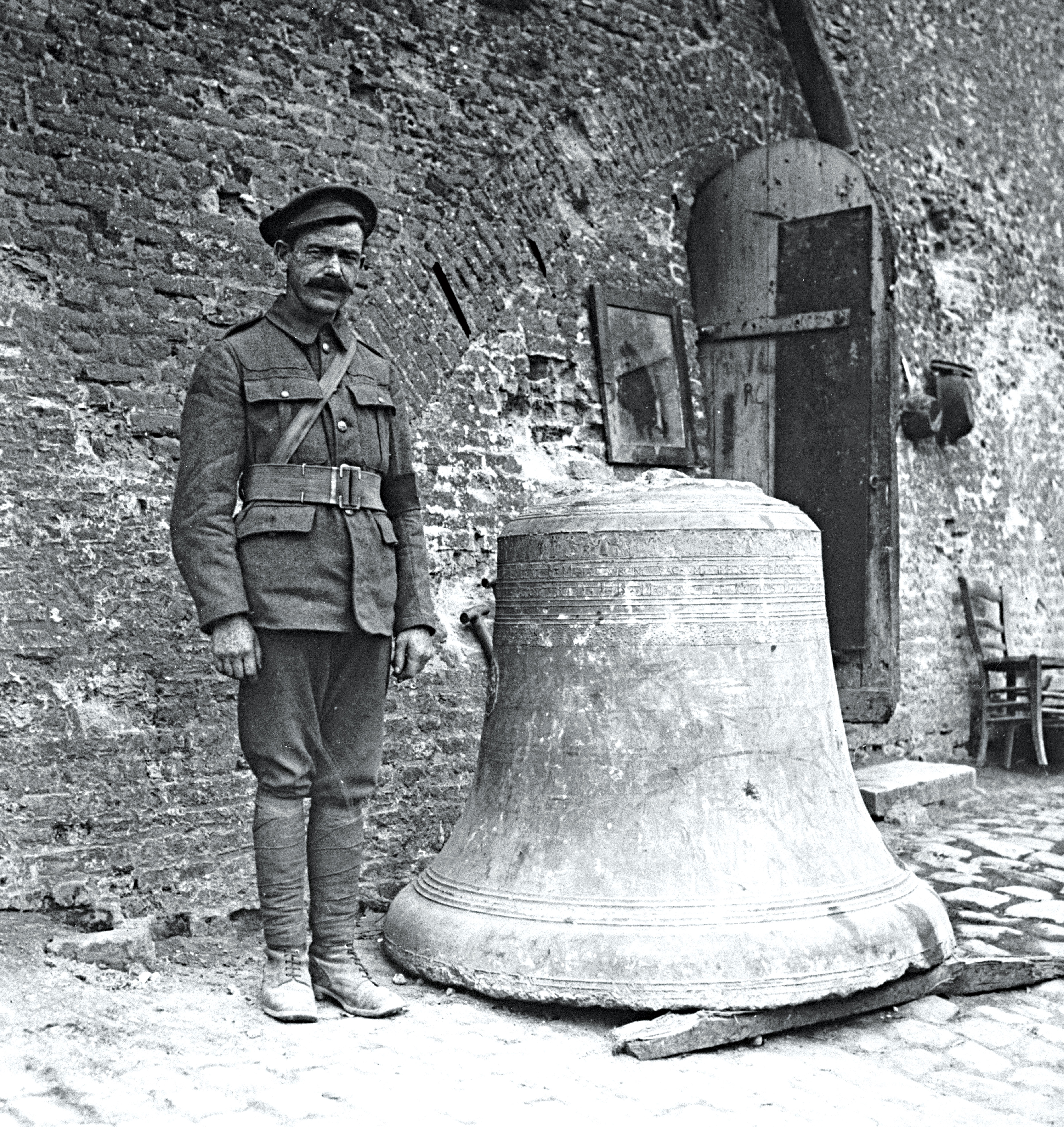
Clearly, bells ignite deep passions in people. The Roman Catholic Church, Price noted, regards bells as a vas sacrum, or sacred vessel, and their removal was considered an act of sacrilege. Protestant churches were not so strict. In fact, in Germany they were willing contributors to the war effort.
Bells have a special place in many religious and cultural traditions. They mark joyous occasions like weddings and sombre ones like funerals. They tell time, call dinner, celebrate holidays, summon students to class and send them home after school. They declare the arrivals of trains, warn ships away from shallow waters, and alert residents to impending upheavals.
In Buddhist tradition, the bell can represent the heavenly enlightened voice of the Buddha imparting his teachings. They also issue calls for protection and ward off evil spirits.
Rather than being summoned, Hindus ring the temple bell to inform the deity of their arrival. The bell’s sound is considered auspicious, welcoming divinity and dispelling evil.
After Good Friday services marking the crucifixion and death of Jesus, Christian church bells that traditionally call parishioners to worship typically remain silent until Easter morning, when they declare the resurrection.
“The silence of the bells makes clear that something has fallen apart,” Reverend Rüdiger Penczek, a Protestant pastor based near Cologne, told the German broadcast service Deutsche Welle.
In both world wars, the seizures rendered bell towers silent in many a village and city across Europe, and the conflagration that shattered their quietude robbed many a soldier and citizen of a tranquillity no peal could ever restore.
Across Great Britain, regulations introduced under the sweeping Defence of the Realm Act of 1914
limited wartime bell-ringing, relegating them to the role of warning devices. That quieted about 5,000 bell towers across the British Isles for the duration of the First World War. The silence, as they say, was deafening.
The practice of confiscating and transforming church bells into tools of war was not new, even to the armies of the First World War. It was a longstanding tradition of European warfare that artillery commanders had rights over the bells of conquered villages, towns and cities.
Napoleon, in particular, relished claiming this right and supplemented his war coffers by requiring vanquished cities to buy back their bells. If they could not, the commanding general was entitled to dispose of them as he saw fit. Half the revenue would be his, the other half went to the central treasury. The practice was called rachat des cloches—redemption of the bells.
In the 18th century, bells routinely supplied military campaigns. In the Franco-Prussian War (1870-71), the bishop of Nancy authorized every parish in his diocese to take down all but one of their bells to make cannons for the defence of France. The Hague Conventions of 1910 declared church bells protected and untouchable for war purposes—to no avail.
Fearing the German advance in 1915, Russia removed 300 bells from its own churches, secreting them away at Nikolsy Monastery outside Moscow to prevent their destruction.

The carillon is the national instrument of both the Netherlands and Belgium. Together, the two countries have more than half the world’s 600 carillons, upwards of 200 of them in Holland alone.
The destruction of Belgian carillons, particularly, between 1914 and 1918 resonated across the world and was depicted by the Allies as the brutal annihilation of a unique democratic musical instrument created by a courageous people.
Both countries’ legacies were ravaged in the Second World War: the Nazis took two-thirds of Belgium’s bells; British investigators claimed every single bell was taken out of the Netherlands, with only 300 surviving the war in Hamburg.
To add insult to injury, German occupation authorities had small bells cast in the Netherlands to commemorate their confiscation of European church bells. Bearing the inscription “The bells too are fighting for a new Europe,” they were given as mementos to leading Nazis who played key roles in implementing the seizures.
Beyond their role in feeding war production, bell towers across Europe made ideal sniper nests and observation platforms during both world wars—rendering them, in turn, prime targets for artillery, tanks and other destructive forces.
Across Europe, church bells that survived First World War fighting and theft were often used to warn troops of gas attacks—an application, one could imagine, that would forever taint the sound of church bells for veterans of every stripe.
Some fallen or plundered church bells were taken out to the trenches themselves, where they proved more effective warning systems than the usual improvised gongs such as frypans suspended from rope.
Bells were also powerful symbols in the all-important bond drives and propaganda campaigns of both world wars. Upon joining the Allied effort in 1917, the United States used the Liberty Bell on propaganda posters and leaflets as a symbol of American freedom and a promoter of Liberty Loans. Germany did similar.
Bells were used in early First World War propaganda to decry “the rape of Belgium.” Reports that the monks of Antwerp had refused to ring church bells to celebrate the German victory were embellished. By the time the story was reported by Le Matin in Paris, it told of defiant monks hung up and used as human clappers.
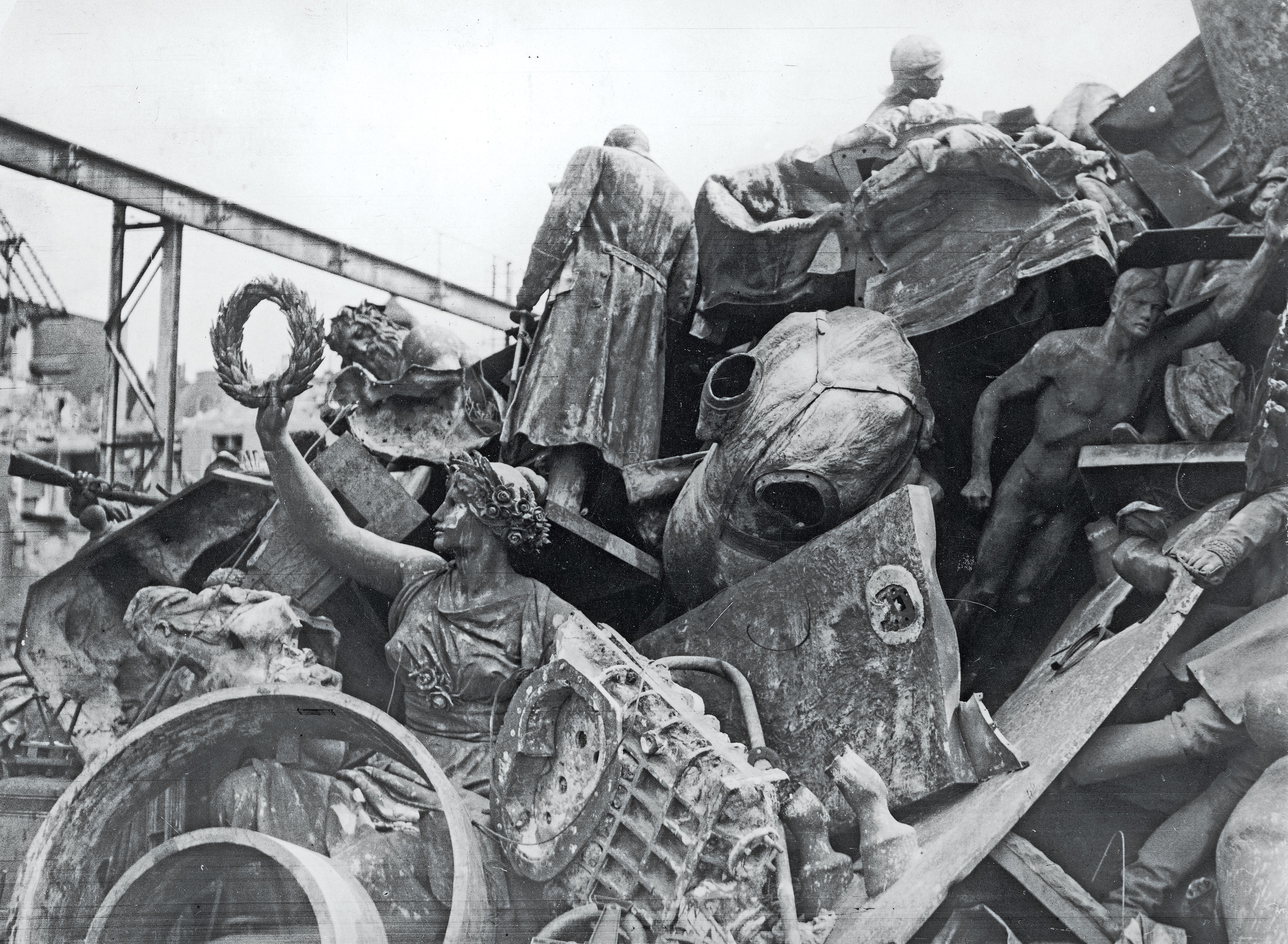
When the shooting finally stopped at 11 a.m. on Nov. 11, 1918, and news of the Armistice broke, bell-ringers across Britain, Canada and the world spontaneously began to sound their chimes. Where church bells were lost, folks waved hand bells.
McCrady, a retired medical doctor and adopted Canadian from Pittsburgh, played 18 pieces on the 100th anniversary of the Armistice, concluding with “Last Post” before the Peace Tower’s bourdon (largest bell) was struck 100 times at sunset.
“To me, Remembrance Day is the most important time that I play in the entire year,” she said. “After all, the Peace Tower is the Peace Tower, and it and its carillon are dedicated to peace and the memory of those who served Canada and lost their lives. It is very humbling [to play on Nov. 11]—and pretty scary, too.”
Dedicating the structure on Canada’s 60th birthday, Prime Minister Mackenzie King called the carillon “the crowning feature of the memorial tower and…the most fitting symbol of the peace…the voice of a nation given in thanksgiving and praise which will sound over land and sea to the uttermost parts of the earth.”
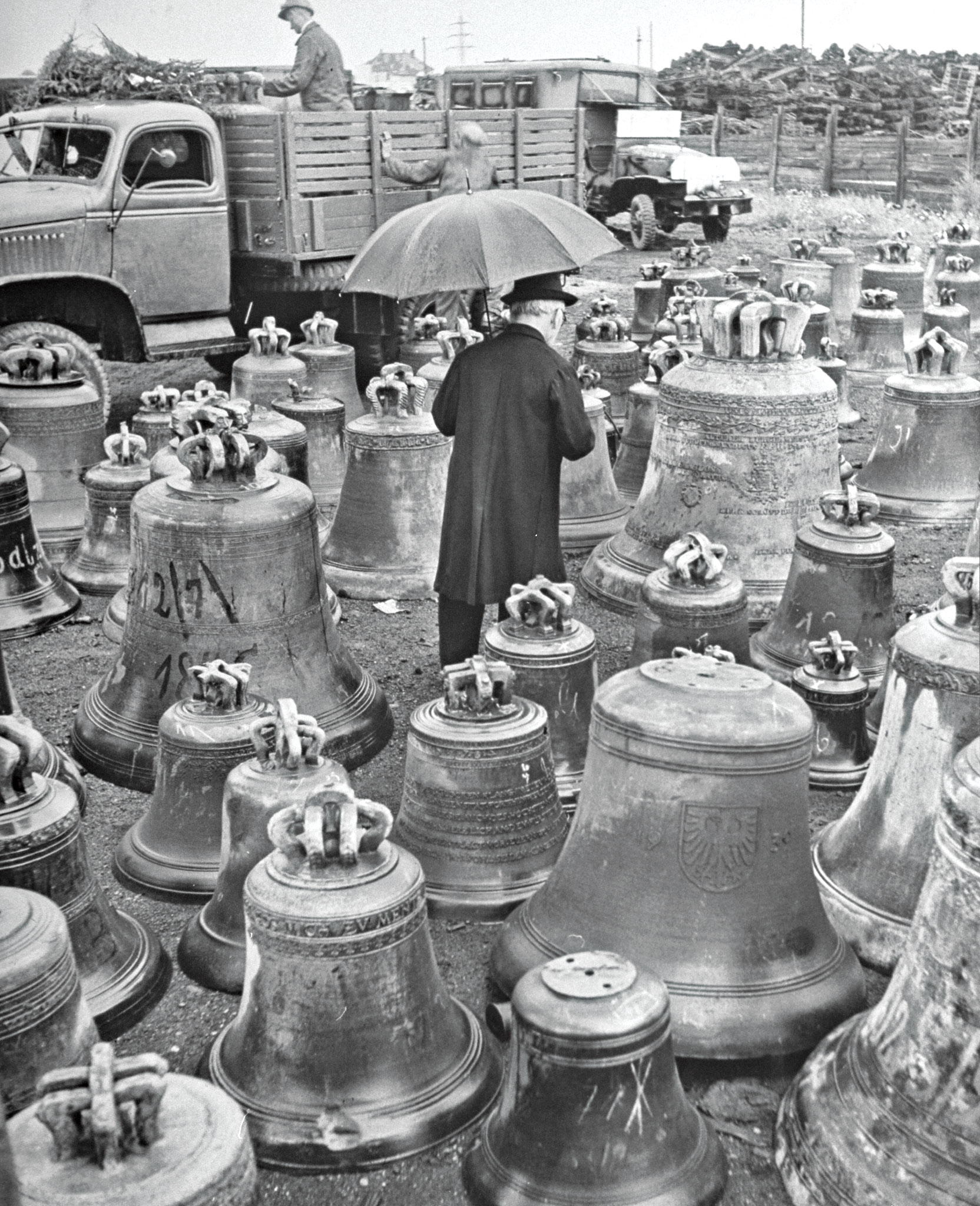
The notes of the carillon’s 53 bells, from the 10-tonne bourdon to its 4.5-kilogram littlest brother, went out on CBC airwaves in the country’s first coast-to-coast broadcast, carrying “a message of peace and goodwill to all men in all lands.”
The bells had been cast as a rare set in 1926-27 by Gillett and Johnston of Croydon, England. The foundry, near London, was bombed out of existence during the Second World War.
Advertisement












